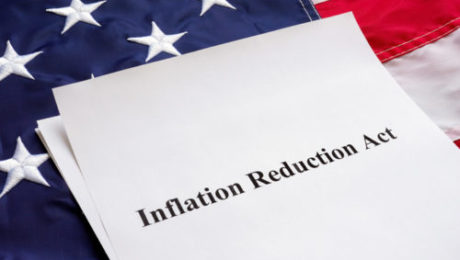4 Key Trends Driving Employer Health Care Costs in 2024
This article is from RISQ Consulting’s Zywave client portal, a resource available to all RISQ Consulting clients. Please contact your Benefits Consultant or Account Executive for more information or for help setting up your own login.

Amid ongoing inflation pressures, employees and employers alike can expect their health care costs to increase in 2024. Global professional services firm Aon reported that health care costs for employers will grow by 8.5% in 2024 (to more than $15,000 per employee), nearly double 2023’s figure. In line with those findings, the Business Group on Health’s 2024 Large Employer Health Care Strategy Survey predicts a 6% increase in health care costs in 2024.
All signs point to health care costs continuing to rise in 2024. This article outlines the primary drivers of health care costs and ways that employers plan to manage them.
Mental Health Challenges
Employees’ mental health concerns and needs, such as depression, anxiety and substance use disorder, undoubtedly rose during the COVID-19 pandemic and continue to linger amid its aftermath.
Consider the following findings from the Business Group on Health’s survey:
- Three-quarters of employers (77%) reported an increase in mental health concerns among employees in the aftermath of the pandemic, compared to 44% in 2023.
- Nearly one-fifth of employers (16%) anticipate an increase in mental health concerns in the future.
Employees and employers alike will continue to notice a prolonged impact of mental health challenges. In response, employers are expected to continue to expand access to mental health support and services, and many plan to provide more options for support and reduce cost barriers to care. Organizations may also explore manager and employee training to recognize mental health issues, anti-stigma campaigns and flexible working arrangements so employees can discreetly seek mental health care during regular working hours.
Pharmacy Costs
In 2024, pharmacy costs will continue to impact employers significantly. In addition to high-cost drugs, relationships with pharmacy benefits managers (PBMs) are also a key concern for employers.
The Business Group on Health’s survey revealed the following about prescription drugs and pharmacy costs:
- Employers experienced an increase in the median percentage of health care dollars spent on pharmacy, from 21% in 2021 to 24% in 2022.
- Most (92%) employers were concerned or very concerned about high-cost drugs in the pipeline, and 91% were concerned or very concerned about the pharmacy cost trend overall.
- Nearly three-quarters (73%) of employers say finding more transparency in PBM pricing and contracting is a priority, and 58% say they want to see additional reporting and better provider quality measurement standings.
To address rising drug costs, employers may implement pharmacy management strategies. These could include prioritizing transparent PBM practices (e.g., requesting detailed reports, auditing PBM services, requiring compensation and pricing disclosures and negotiating contract terms) and plan design changes to address costly medications and treatments (e.g., prior authorization, step therapy and sites of care management).
Cancer Treatment
Preventive screenings were a critical health care component disrupted during the pandemic, according to the Business Group on Health. As a result, employers are anticipating more late-stage cancers among workers.
Consider the following survey results from the Business Group on Health:
- Fifty percent of employers report cancer is the number one driver of health care costs, and 86% say it’s among their top three drivers.
- Half of employers (53%) will offer a cancer-focused center of excellence approach in 2024, with an additional 23% considering this strategy by 2026.
In response to rising cancer care, employees may encourage advanced screening measures and maintain full coverage of recommended prevention and screening services. Employers are also monitoring oncology clinical advancements (e.g., biomarker testing and immunotherapies) and helping guide employees to high-quality care to improve health outcomes.
Health Care Delivery
Health care innovations, specifically on-site or near-site clinics and virtual care, gained popularity during the pandemic, and demand is starting to level out. However, such types of care continue to be critical for employees as they prioritize primary or preventive health care.
The survey by Business Group on Health discovered the following views about health care delivery:
- Fewer employers thought virtual care would significantly impact health care delivery in 2023 (64%), compared with 2021 findings (85%). Regardless, 2023’s figure is still relatively high and above pre-pandemic survey results.
- Employers’ number two priority for 2024 is implementing more virtual health opportunities. In addition to expanding, they’ll evaluate partnerships and consider vendors that can integrate with others.
- Roughly half of employers (53%) offered on-site clinics in 2023, and the same figure is expected to do so in 2024, which likely signals a plateau in the offering. Some employers have migrated to a hybrid or remote work environment, reducing the need for health services at the workplace.
It’s no surprise that the necessity of virtual health care peaked during the pandemic. Moving forward, more employers are looking to expand health care offerings to better support primary care and mental health. It comes down to prioritizing employee health outcomes.
Summary
Heightened health care costs are likely to continue impacting employers for the foreseeable future. Looking ahead to 2024, many employers are focusing on impacts related to mental health, medications, cancer and health care delivery. To combat rising costs, employers are focusing on improving employee health outcomes, reducing unnecessary services and prioritizing prevention and primary care.
Additionally, it may be advantageous for employers to focus on benefits education and employee communication. The goal is to help them understand their benefits and the best ways to utilize and maximize them. Many employees are looking for ways to stretch their hard-earned dollars further, and employers can step in to provide that much-needed guidance. In turn, employer efforts focused on preventive and proactive health care can help curb health care costs.
Contact us for more employer-sponsored health care resources.
- Published in Blog
NEWS BREIF: Senate Passes the Inflation Reduction Act
This article is from RISQ Consulting’s Zywave client portal, a resource available to all RISQ Consulting clients. Please contact your Benefits Consultant or Account Executive for more information or for help setting up your own login.
The U.S. Senate recently passed the Inflation Reduction Act, which includes provisions aimed at addressing climate change, reducing the high costs of prescription drugs and lowering the deficit by approximately $300 billion. The $750 billion spending bill passed through the budget reconciliation process, meaning all 50 Democrats and one tie-breaker vote from Vice President Kamala Harris were all that was needed.
How Will the Inflation Reduction Act Impact Health Care Policy?
The legislation includes provisions to lower prescription drug prices by allowing the federal health secretary to negotiate the prices of certain expensive drugs annually for Medicare. However, this will not impact every prescription drug and will not happen quickly. The negotiations will begin in 2026 for a maximum of 10 prescription drugs covered by Medicare, another 15 drugs in 2027 and 2028, and then 20 drugs in 2029. Additionally, pharmaceutical companies will be required to issue rebates if they raise drug prices beyond the rate of inflation.
The bill originally included a provision capping insulin at $35 per month for privately insured and Medicare patients. However, the Senate parliamentarian ruled the provision for privately insured patients out of order and removed it before the legislation was passed. The bill does cap out-of-pocket prescription drug costs at $2,000 for people on Medicare beginning in 2025.
Importantly, the bill helps millions of Americans avoid sharp increases in health care costs by extending enhanced Affordable Care Act subsidies for three years, one year later than originally proposed by the U.S. Congress.
What Else Does the Inflation Reduction Act Address?
The bill represents the largest climate change investment in U.S. history, with the goal of reducing U.S. carbon emissions by 40% by 2030. The bill contains tax incentives to reduce the cost of electricity by investing in renewable energy infrastructure and incentivizing Americans to switch to electric power for their homes and vehicles.
To boost revenue, the bill imposes a 15% minimum tax on the income of large corporations that earn at least $1 billion per year. This is expected to raise $300 billion in government revenue. The bill also levies a 1% excise tax on stock buybacks that will take effect in 2023. Some experts believe this will result in a rush on buybacks by some companies before the excise tax takes effect next year.
What This Means
The U.S. House plans to take up the bill at the end of the week. If the House passes the bill, which experts anticipate will happen, the legislation will be sent to President Joe Biden for signature. As this legislation is anticipated to impact large segments of the U.S. economy, employers will want to follow the process closely.
We will keep you apprised of any notable updates. Contact RISQ Consulting for more health care resources.
- Published in Blog
Fuel Efficiency Best Practices for Fleets
This article is from RISQ Consulting’s Zywave client portal, a resource available to all RISQ Consulting clients. Please contact your Benefits Consultant or Account Executive for more information or for help setting up your own login.
Improving the fuel efficiency of a company’s fleet of vehicles can have many financial and environmental benefits, especially with fuel prices on the rise. Fuel can be one of the largest and most difficult expenses to predict and control. Therefore, it’s important for vehicle fleet managers to conserve fuel, maximize efficiency and reduce vehicle emissions by implementing fuel-efficient policies, technology and maintenance strategies.
Best Practices
Managing a fleet’s fuel usage—even for just a couple of vehicles—can feel overwhelming. The following are ways to reduce fleet fuel costs and make operations more efficient:
- Monitor driving patterns. A U.S. Department of Transportation report found that there can be as much as a 35% difference in fuel consumption between a good and poor driver. Monitoring speeding, braking and acceleration patterns can indicate whether drivers are using good practices on the road or operating inefficiently.
- Cut engine idling. Idling can burn a quarter to a half gallons of fuel per hour. To reduce fuel and oil waste:
- Turn off the engine while waiting or making deliveries.
- Turn off the engine while stuck in traffic.
- Do not idle to warm up the engine.
- Improve route efficiency. Route efficiency can be improved with GPS tracking technology to ensure operations are streamlined and drivers don’t spend their day and fuel driving back and forth.
- Remove unnecessary weight from vehicles. Every extra 100 pounds in a vehicle can increase gas costs by up to $0.03 cents per gallon, which can quickly add up over the course of hundreds of thousands of gallons across multiple vehicles. Only travel with necessary packages or equipment.
- Schedule maintenance. Preventive and regular maintenance can reduce fuel costs, extend the lifespan of fleet vehicles and ensure the safety of drivers and the community.
- Check the tire pressure. Tires should be inflated to 75% of the recommended pressure; underinflated tires can significantly lower a vehicle’s average gas mileage. Checking the tire pressure should be a mandatory part of the pre-trip safety check since it not only improves the cost per mile but also helps the vehicle respond properly in unsafe situations.
- Dispatch the closest vehicle. Business margins and fuel efficiency can be improved by dispatching the closest vehicle to a new delivery or appointment. Fleet-tracking programs can help automate dispatching and routing.
- Leverage a fleet telematics solution. A fleet telematics solution can help managers gain data and insight into fleet status in terms of individual vehicle performance and overall operations, allowing them to make changes that will help fuel efficiency.
- Provide incentives. Fleet managers can encourage efficient driving by offering drivers incentives, such as recognition or special privileges.
- Implement driver training. Providing drivers with training regarding fuel-efficient habits can increase their awareness of fuel efficiency on the road. It can help them be mindful of things like keeping gears low when accelerating, changing gears early, driving at slower speeds and learning to read the road more effectively.
By implementing policies and practices that monitor and reward fuel-efficient behavior, fleet operations can reduce fuel costs. For more risk management guidance, contact us today.
- Published in Blog
Combating Rising Benefits Costs During Periods of High Inflation
This article is from RISQ Consulting’s Zywave client portal, a resource available to all RISQ Consulting clients. Please contact your Benefits Consultant or Account Executive for more information or for help setting up your own login.
The U.S. inflation rate has increased by 8.3% over the last year, according to the Bureau of Labor Statistics (BLS). This has led to significant price increases across various consumer goods as well as employee benefits such as health insurance. In fact, one-third of U.S. employees have already seen an increase in their health costs in the last year, a survey conducted by the Employee Benefit Research Institute reported.
This increase in costs presents challenges for employers facing one of the most difficult hiring markets in recent memory. Luckily, there are some strategies employers can utilize to mitigate increasing benefits costs without shifting the burden to employees, thus remaining attractive to current and prospective employees.
Eliminate Underutilized Benefits
One simple strategy is to eliminate underutilized benefits. Resources from unused benefits can then go towards more expensive benefits. An easy way to evaluate which benefits best suit a company’s needs is to regularly send out benefits surveys to the company’s employees. These surveys can help employers know which available benefits may not be providing value to the company.
Wellness Programs
While there are skeptics and believers when it comes to actual cost savings provided by wellness programs, they often play an important role in other positive workplace developments. For instance, promoting and achieving a healthy workforce often improves morale and productivity. These programs are also valuable because they can lead to improved employee attraction and retention as well as increased loyalty to the employer.
There are a variety of wellness benefits employers can offer to suit the needs of their company. Potential options include providing in-office perks for nutrition, fitness and stress management, or gym memberships.
Telemedicine
Taking time off to go to the doctor can often be a time-consuming and expensive undertaking. Telemedicine may help lessen these issues by eliminating associated costs, such as transportation, and providing faster and more affordable care to those seeking medical services. By meeting with health care providers over the internet, employees can get the care they need more quickly and are likely to be more productive as a result. Additionally, telemedicine allows employees to take less paid time off of work and makes it much easier for them to avoid obstacles that could get in the way of seeking health care, such as child care.
Conclusion
As employers adjust to increasing inflation rates and the rising costs that follow, there are several strategies they can use to help offset the severity of these increases. From providing wellness programs to facilitating the use of telemedicine, employers will need to think carefully about which strategy would work best for their unique situation.
Contact us today for more inflation-related content.
- Published in Blog
Supply Chains, Inflation, and What This Means For You
This article is from RISQ Consulting’s Zywave client portal, a resource available to all RISQ Consulting clients. Please contact your Benefits Consultant or Account Executive for more information or for help setting up your own login.
The pandemic continues to disrupt supply chains. Amid rising inflation, you may be noticing higher prices when it comes to purchasing everyday items, dining at restaurants and fueling up at the gas pump. This inflation began to soar in early 2021 and continues to be the highest it’s been in more than three decades. Undoubtedly, drastic consumer pricing changes may fuel financial anxiety.
Supply chains and inflation are intertwined, but it remains to be seen how consumer pricing will continue to be impacted in 2022 and beyond. This article explores today’s supply chain issues, consumer pricing and your budget.
Supply Chain Issues
Supply chain problems were apparent at the beginning of the pandemic as many store shelves were empty of essential items like toilet paper. Nearly two years later, you may still be struggling to find specific items or, if you find them, may need to pay more than usual. The pandemic has disrupted most aspects of the global supply chain, making it challenging for companies to manufacture, transport and distribute their goods. For example, e-commerce mixed with consumer demands has surpassed the market’s capacity to produce or ship orders. Retailers and other businesses are also having difficulty finding enough employees.
The pandemic has made supply and demand volatile, shifting faster than supply chains can adjust. It’s unknown when shortages and delays will end, but they’re likely to continue to some extent this year—and maybe longer.
Inflation and Consumer Pricing
Inflation is a normal occurrence in which prices of goods and services go up, and your purchasing power of money goes down. Your dollar won’t buy as much today as it did five or 10 years ago. Inflation is a key reason why many choose to invest a proportion of their money instead of keeping it as cash; cash loses its value every year due to inflation.
The Consumer Price Index rose to 7% in December 2021, the highest since the early 1980s. The debate on this topic focuses on whether current rising costs are temporary or permanent. Some industry experts believe soaring costs are temporary due to messy supply chains. On the other hand, some experts believe inflation is here to stay amid a tight labor market and supply constraints. As experts—and even officials within the Federal Reserve—are on both sides of the debate, only time will tell if hiked inflation is here to stay.
What You Can Do
To deal with this uncertainty, it’s best to focus on what you can control. The cost of necessary goods will likely continue to rise, so this could mean fitting larger grocery bills and transportation costs into a budget.
Inflated consumer goods and services are a reality today, so it’s critical to have a financial game plan. Your budget will likely have to change as you plan for everyday and large purchases.
Regardless of your situation—it can be helpful to discuss your financial and investment goals with a financial advisor. If you have additional questions or need resources for financial assistance, speak to your employer.
- Published in Blog






